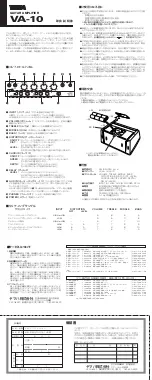
Instructions For Use. Page 6
F25
CONNECTIONS
to a power amp. One of these pairs are normal RCA type sockets. These are the
unbalanced outputs sometimes known as single ended outputs. The other pair of
sockets are the XLR balanced outputs. When the latter is used with a power ampli-
fier with balanced XLR inputs, benefits in terms of noise and dynamic range should
be apparent.
OPERATION
All operational functions of the F25, with the exception of the power on and
off, can be controlled via the supplied remote control.
To select any input, simply press the appropriate button on the remote control.
The volume control is motorised, so that when you press ‘+’ or ‘-’ on the remote, the
control will rotate in the required direction.
The LED in the volume control knob indicates the current setting of the control.
To temporarily turn off the sound, in order to answer the telephone for instance, press
the MUTE button on the remote control. The LED will change colour to red, indicat-
ing the muted state.
It is advisable to acquire the habit of turning down the volume to zero before
switch off.
EXTERNAL PROCESSOR CONNECTIONS
The F25 is fitted with external processor ‘out to’ and external processor ‘in
from’ sockets. As supplied, these will be connected by two shorting links. These can
easily be removed by simply pulling them out.
Note: When you do this the pre-amplifier and power-amplifier stages will
be separated, thus if no connection is made from 'out to' to 'in from' via a proc-
essor for instance no sound will be heard.
The most likely use of these sockets, would be to add a sound processor of some
kind to your system. This would be connected with its output to ‘input from’ on the
F25, and its input to ‘output to’. This device would then be permanently in the
circuit, and would affect the sound on all inputs.
Sound processors which are possible candidates for insertion are:-
· Surround Sound units.
· Digital Sound Processors (DSP)
· Graphic or Parametric Equalisers
· Impulse Noise Reduction Systems.
Please be aware that the potential to change the sound from that intended by the
producer of the recording is quite great with all of these devices, and that their pres-
ence in the circuit will degrade the sound quality of the system. The extent to which
this occurs will depend on the quality of the processor.



























